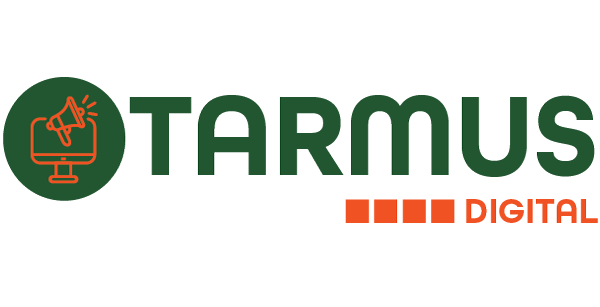Introduction
So, you’re thinking about becoming a full-stack developer? Great choice! Full stack developers are the Swiss Army knives of the tech world, equipped with a wide range of skills that allow them to handle both frontend and backend development. But what does that mean? And why is it so important? Let’s dive in and find out.

Understanding the Basics
What is Web Development?
Web development is the magic that happens behind the scenes to make a website appear amazing, run quickly, and provide a smooth user experience. It entails establishing the site’s structure using HTML, styling it with CSS, and making it interactive with JavaScript.
Frontend vs Backend Development
Frontend development focusses on what users see and interact with. It’s the part of the website that includes everything the user experiences directly: text, images, sliders, buttons, etc. Backend development, on the other hand, is the server side of the application. It contains the server, database, and application logic.
Core Technologies for Full Stack Development
HTML, CSS, and JavaScript
These three are the bread and butter of web development. HTML structures the web content, CSS styles it and JavaScript makes it interactive.
Backend Languages: Node.js, Python, Ruby, PHP
Different projects require different backend languages. Node.js is popular for its efficiency and ability to handle real-time applications. Python is well-known for being simple and easy to read. Ruby and PHP are also commonly utilized in web development.
Databases: SQL, NoSQL
SQL databases are relational, which means they employ structured query language to define and manipulate data. Examples include MySQL and PostgreSQL. NoSQL databases, like MongoDB, are more flexible and can handle unstructured data.
Frontend Development
HTML and CSS Basics
HTML (Hypertext Markup Language) is the standard markup language for producing web pages. CSS (Cascading Style Sheets) describes how an HTML document should look and be formatted.
JavaScript and Its Frameworks: React, Angular, Vue
JavaScript is a must-know for any web developer. Frameworks like React, Angular, and Vue take JavaScript to the next level by providing powerful tools to build dynamic and responsive user interfaces.
Responsive Design and Bootstrap
Responsive design guarantees that online applications look well on all devices, including desktops and smartphones. Bootstrap is a famous framework that allows developers to create responsive websites quickly and effortlessly.
Backend Development
Server-side Programming Languages
Languages like Node.js, Python, Ruby, and PHP are essential for backend development. They help create the server side of the application, manage databases, and process user requests.
Introduction to Node.js
Node.js is a sophisticated JavaScript runtime based on Chrome’s V8 JavaScript engine. It’s widely used for building scalable network applications due to its non-blocking, event-driven architecture.
Working with Databases: SQL and NoSQL
Understanding how to work with both SQL and NoSQL databases is crucial. are excellent for complicated queries and transactions, but NoSQL databases are suitable for processing vast amounts of unstructured data.
Version Control Systems
Importance of Version Control
Version control systems are vital for tracking changes to your code. They help you manage different versions of your code, collaborate with other developers, and revert to previous versions if needed.
Getting Started with Git and GitHub
Git is a popular version control system, and GitHub is a platform for hosting and collaborating on Git repositories. Learning how to utilize Git and GitHub is essential for all developers.
Development Tools and Environments
Integrated Development Environments (IDEs)
IDEs like Visual Studio Code, IntelliJ IDEA, and Eclipse provide comprehensive facilities for software development, including code editing, debugging, and testing.
Code Editors: Visual Studio Code, Sublime Text
Code editors are lighter than IDEs and provide a focused environment for coding. Visual Studio Code and Sublime Text are among the most popular due to their simplicity and powerful features.
Debugging Tools
Debugging is a critical part of development. Tools like Chrome DevTools and Firebug help you find and fix issues in your code quickly.
APIs and RESTful Services
What are APIs?
APIs (Application Programming Interfaces) allow different software applications to communicate with each other. They are essential for integrating different systems and creating seamless user experiences.
Building and Consuming RESTful Services
RESTful services are APIs that adhere to the concepts of REST (Representational State Transfer). They use standard HTTP methods and are stateless, making them easy to use and scalable.
Testing and Debugging
Importance of Testing in Development
Testing guarantees that your code works as planned and helps to avoid bugs and difficulties. It’s a crucial part of the development process.
Unit Testing, Integration Testing
Unit testing focusses on individual components, whereas integration testing ensures that several components operate together properly.
Popular Testing Tools
Tools like Jest, Mocha, and Selenium are widely used for testing in web development. They help automate the testing process and improve code quality.
Deployment and Hosting
What is Deployment?
Deployment is the process of making an application available to users. It involves transferring your code to a live server and ensuring it runs correctly.
Cloud Services: AWS, Azure, Google Cloud
Cloud services offer a scalable and reliable infrastructure for hosting web applications. AWS, Azure, and Google Cloud are the top providers, offering a range of services and tools for developers.
Continuous Integration/Continuous Deployment (CI/CD)
Code updates are automatically tested and deployed as part of CI/CD processes. This helps ensure that your application is always up-to-date and working correctly.
Security in Web Development
Common Security Threats
Web applications are vulnerable to various security threats, including SQL injection, cross-site scripting (XSS), and cross-site request forgery (CSRF).
Best Practices for Securing Web Applications
Implementing security best practices, such as input validation, secure authentication, and regular security audits, is essential for protecting your web applications.
Soft Skills for Full Stack Developers
Communication and Teamwork
Good communication and teamwork skills are crucial for collaborating with other developers, designers, and stakeholders.
Problem-solving Skills
Full-stack developers need strong problem-solving skills to debug issues, optimize performance, and create efficient solutions.
Time Management
Effective time management is vital for juggling various projects, meeting deadlines, and being productive.
Building a Portfolio
Importance of a Strong Portfolio
A strong portfolio showcases your skills and projects, helping you stand out to potential employers or clients.
Projects to Include in Your Portfolio
Include a variety of projects that demonstrate your expertise in frontend and backend development, as well as your ability to work with different technologies.
Continuous Learning and Staying Updated
The Ever-changing Tech Landscape
The tech industry is constantly evolving, with new tools and technologies emerging all the time. Staying updated is essential for maintaining your skills and competitiveness.
Resources for Continuous Learning: Courses, Books, Blogs
There are numerous tools accessible for lifelong learning, including online courses, books, and blogs. Platforms like Coursera, Udacity, and Medium are great places to start.
Conclusion
Becoming a full-stack developer is a difficult yet rewarding process. It requires a broad range of skills and continuous learning to stay updated with the latest technologies. But with dedication and hard work, you can master both frontend and backend development and become a versatile and valuable asset in the tech industry. So, roll up your sleeves, dive into the world of coding, and start building your future as a full-stack developer!
Full-stack development isn’t just about knowing multiple technologies; it’s about understanding how they interact and integrate to create seamless user experiences. This comprehensive skill set makes you invaluable in a team, as you can bridge the gap between frontend and backend developers, ensuring cohesive project development. The satisfaction of seeing a project through from start to finish, understanding both the user-facing elements and the underlying logic, is unparalleled.
Additionally, the field of full-stack development is ever-evolving. New frameworks, libraries, and best practices emerge regularly. This constant evolution requires a mindset geared towards lifelong learning. Engaging with the tech community through forums, attending workshops, and continuously experimenting with new technologies will keep you at the forefront of the industry and ensure your skills remain relevant.
Furthermore, becoming a full-stack developer provides several employment prospects. Whether you want to work for a tech giant, a dynamic startup, or as a freelancer, the demand for full-stack developers is high. Companies value the versatility and comprehensive understanding that full-stack developers bring, often leading to better job security and competitive salaries.
In summary, the path to becoming a full-stack developer is demanding but offers immense rewards. By committing to continuous learning and embracing the diverse challenges of both frontend and backend development, you can carve out a successful and fulfilling career. The journey may be tough, but the ability to bring your ideas to life across the entire stack is incredibly empowering. So, take the plunge, keep coding, and watch your skills grow into a force for technological progress.
FAQs
- What is a Full Stack Developer?
- A full stack developer is someone skilled in both frontend and backend development, and capable of handling all aspects of web development.
- How long does it take to become a full-stack developer?
- The time it takes varies depending on your background and dedication. Developing proficiency can take anywhere from a few months to a couple of years.
- What are the key abilities of a Full Stack Developer?
- Essential skills include proficiency in HTML, CSS, JavaScript, backend languages (like Node.js or Python), and database management. Soft skills like problem-solving, communication, and time management are also important.
- Is it necessary to learn both frontend and backend development?
- Yes, learning both is crucial for becoming a full-stack developer, as it allows you to handle the complete development process.
- What resources are best for learning Full Stack Development?
- Online courses, coding boot camps, books, and developer blogs are great resources. Platforms like Coursera, Udacity, and Medium offer valuable learning materials.

